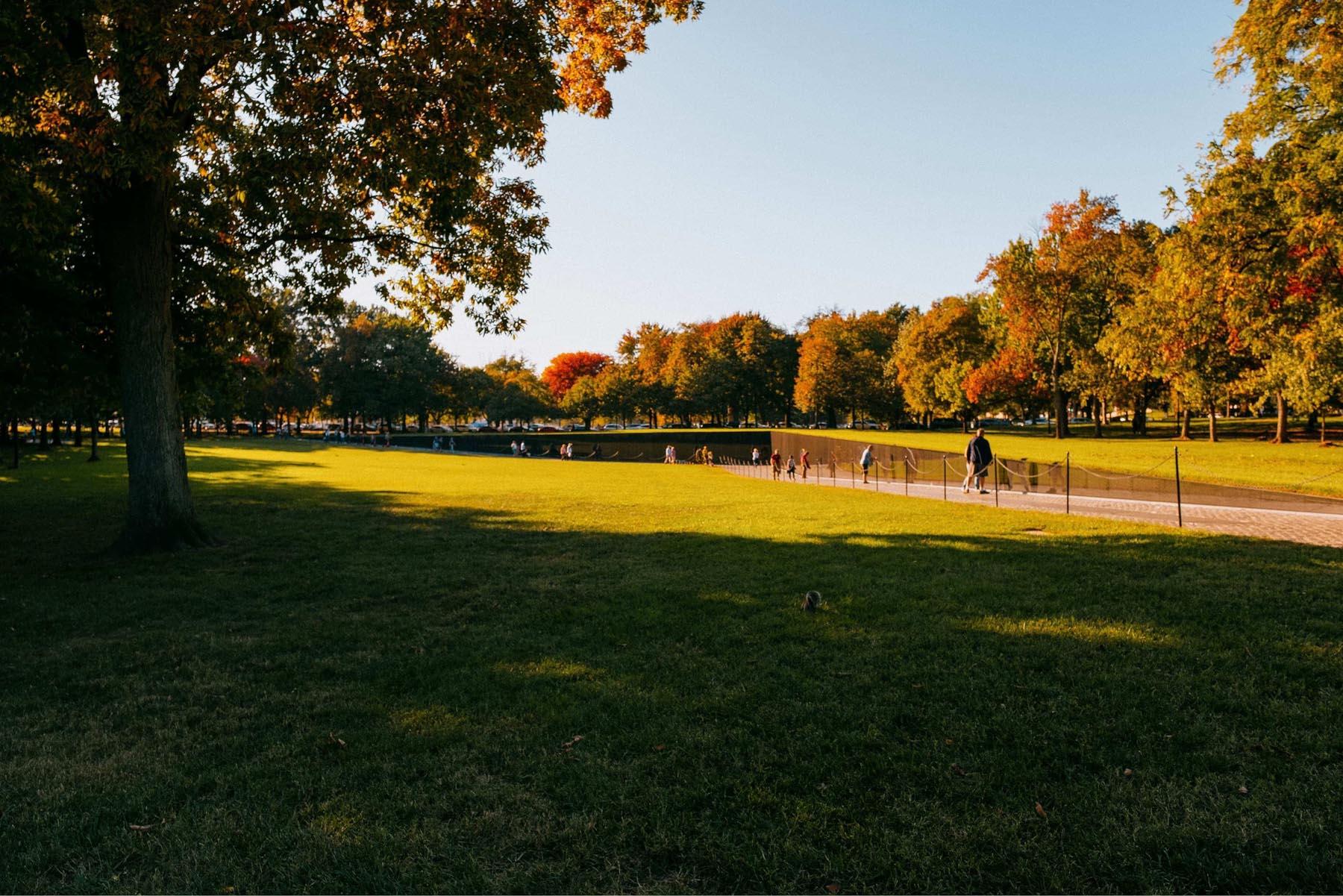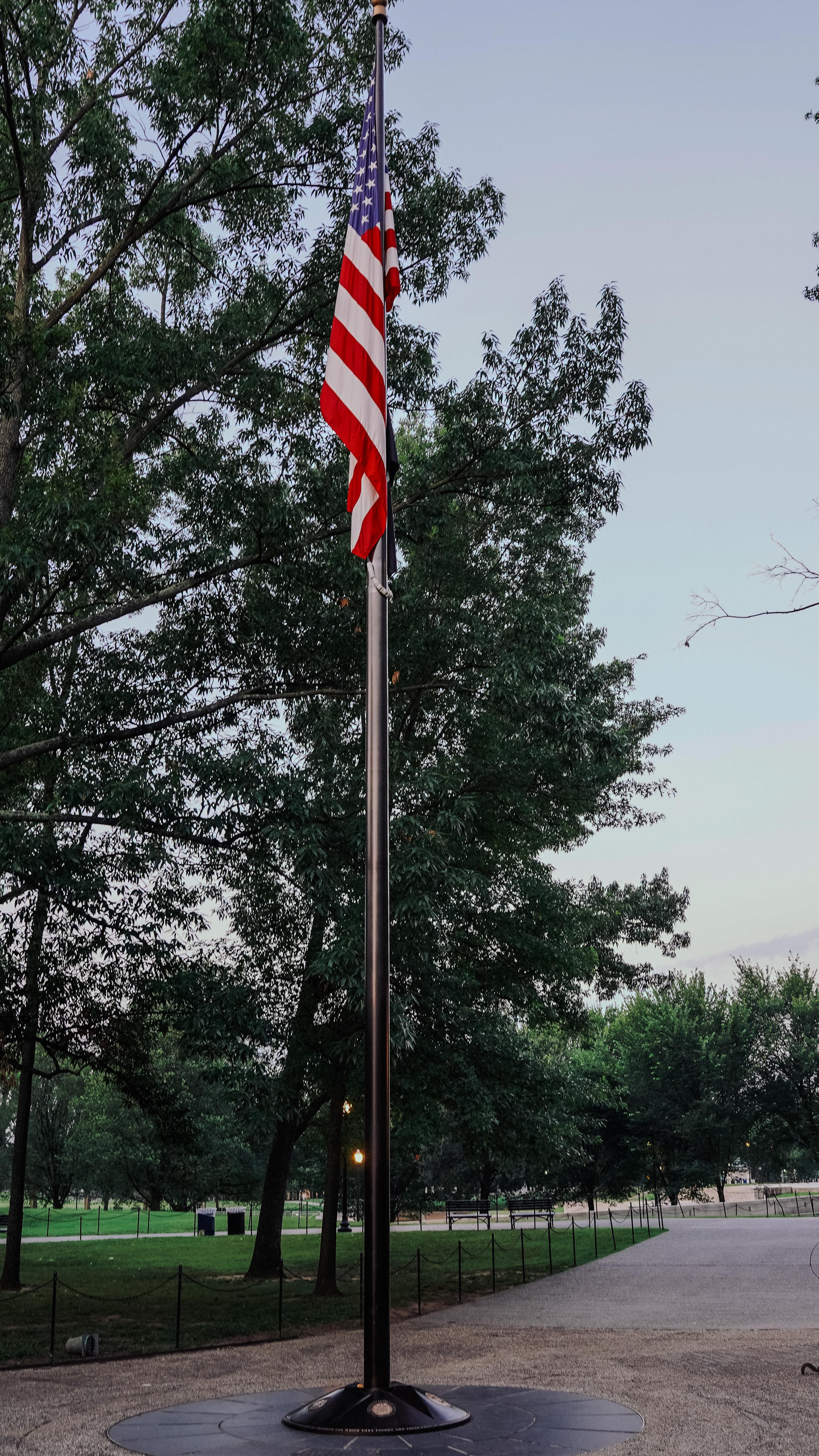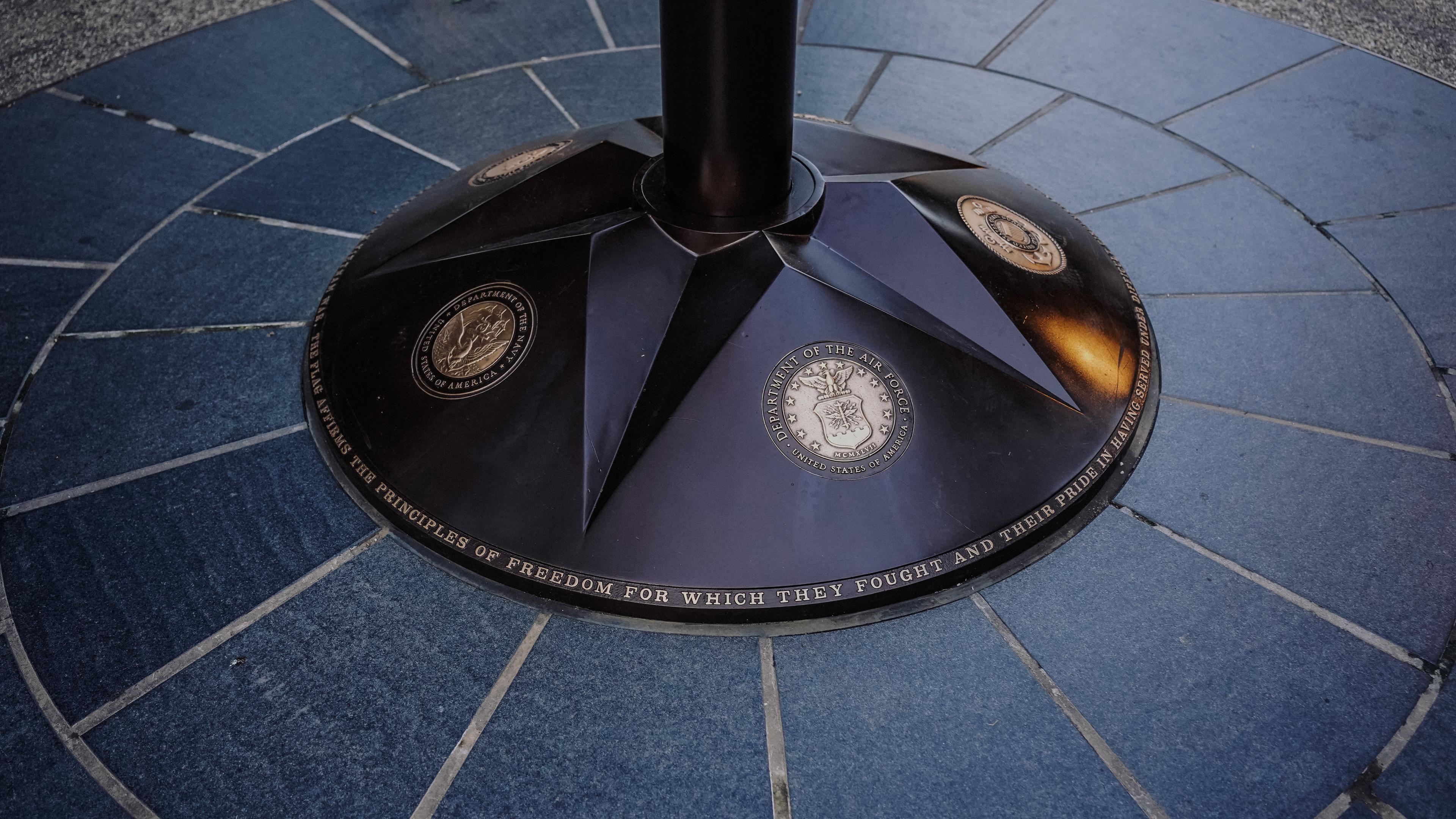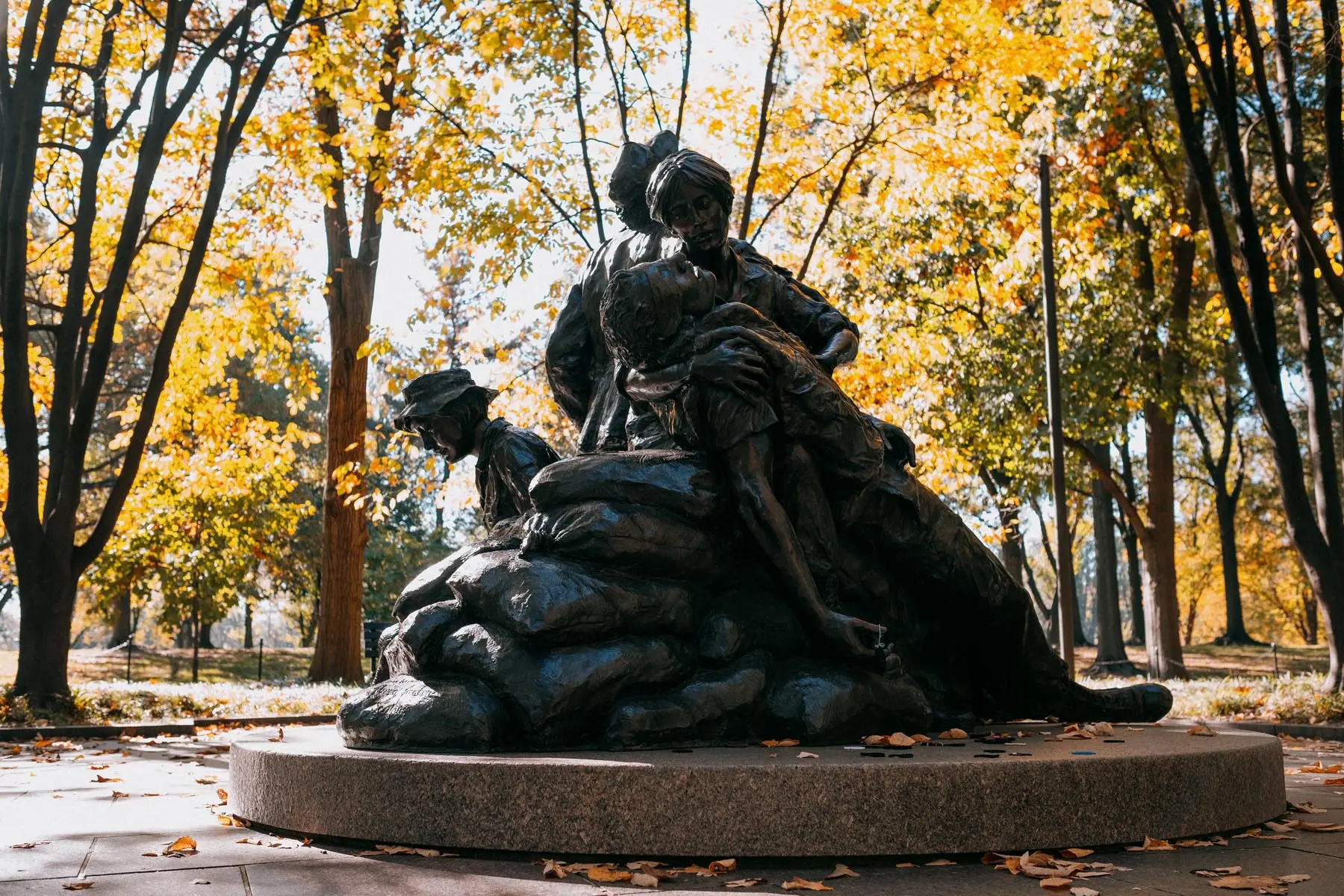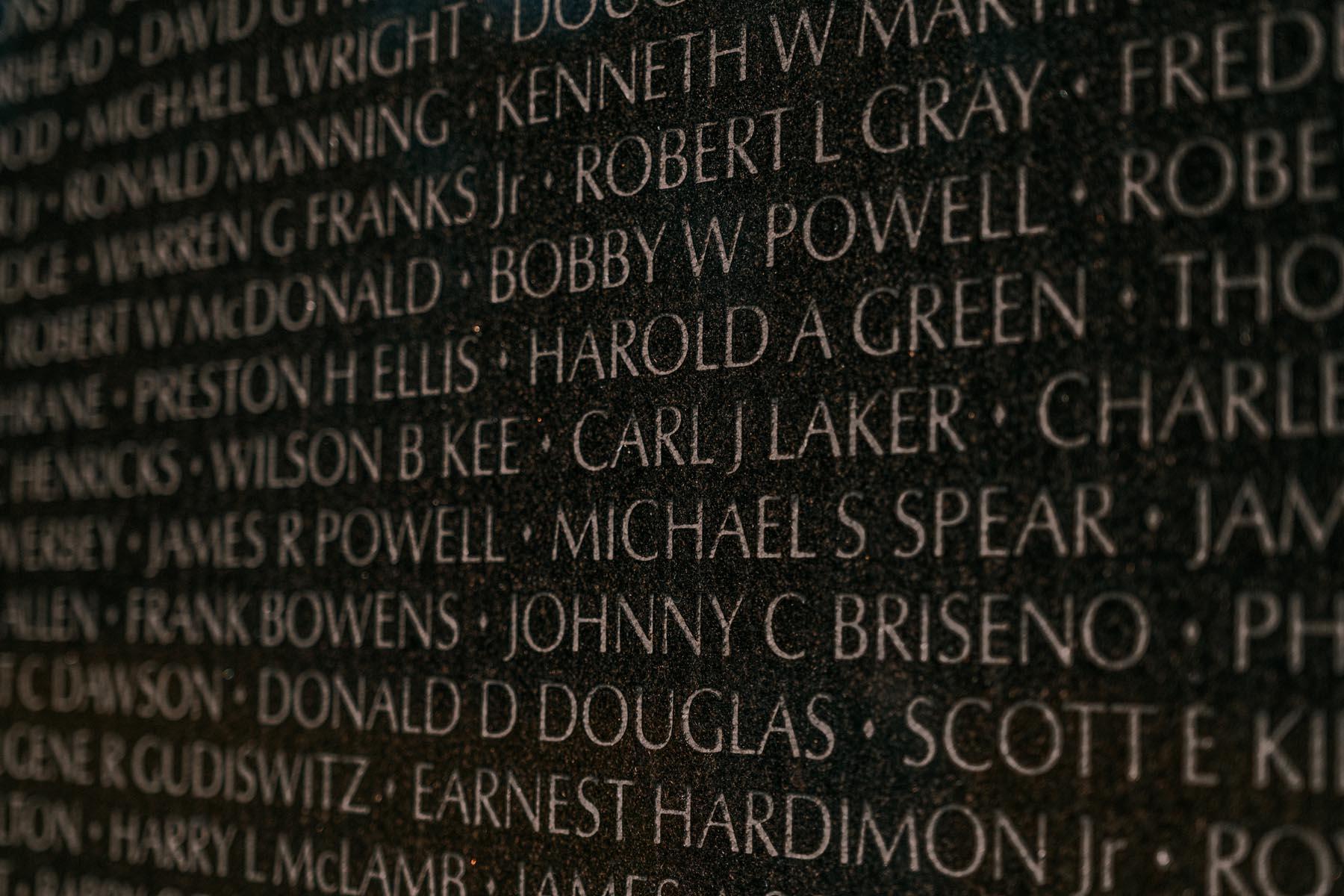
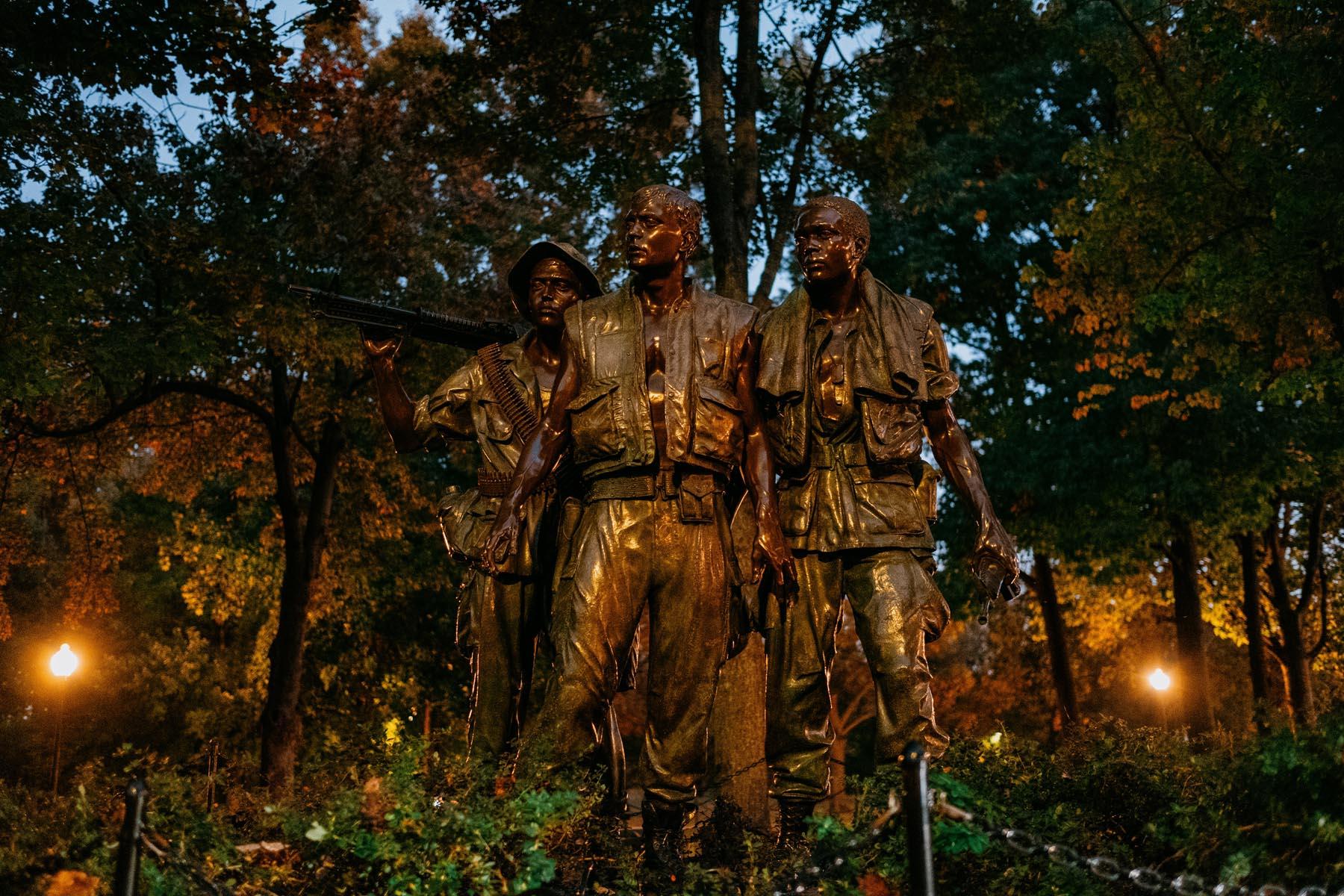
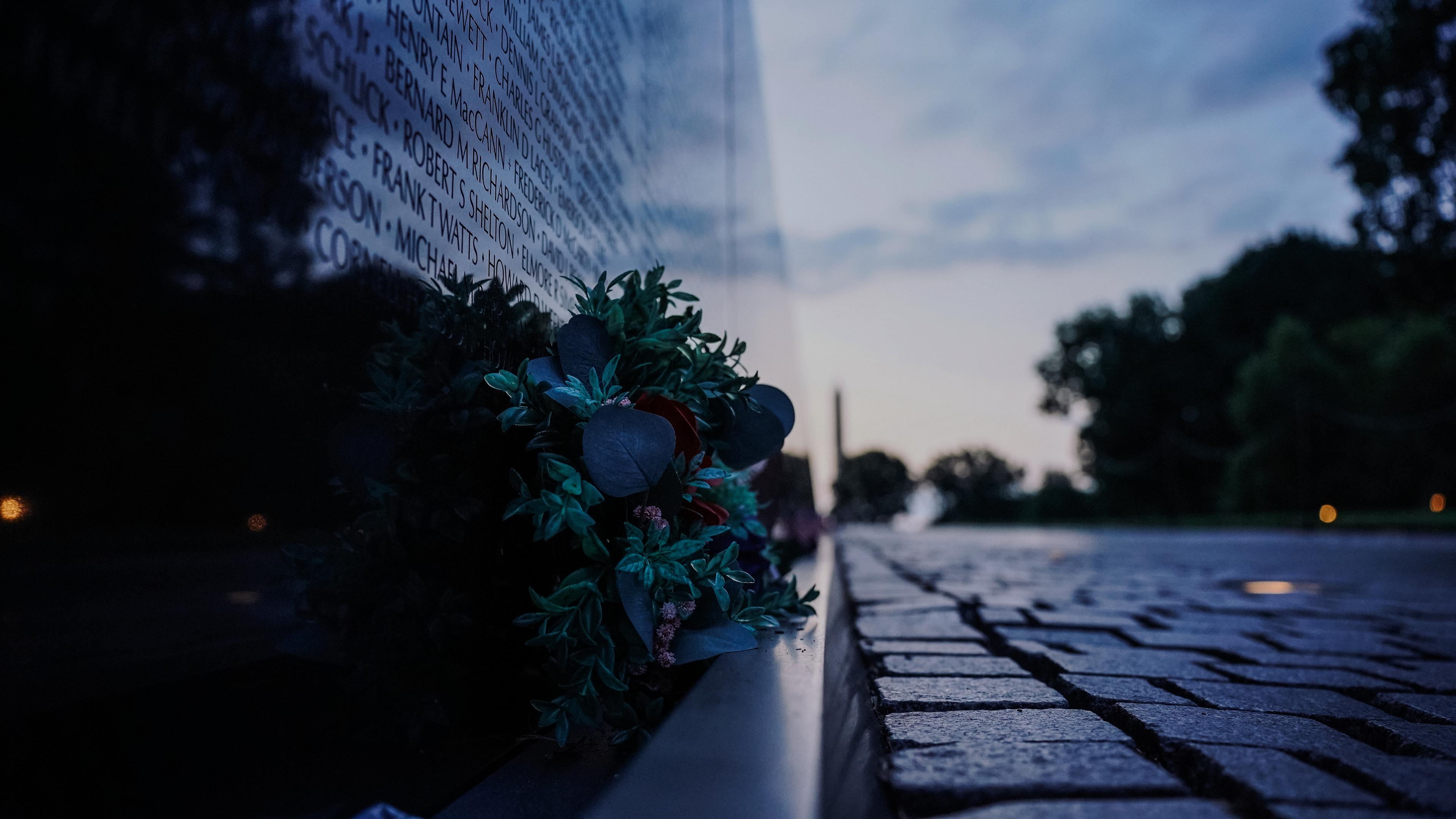

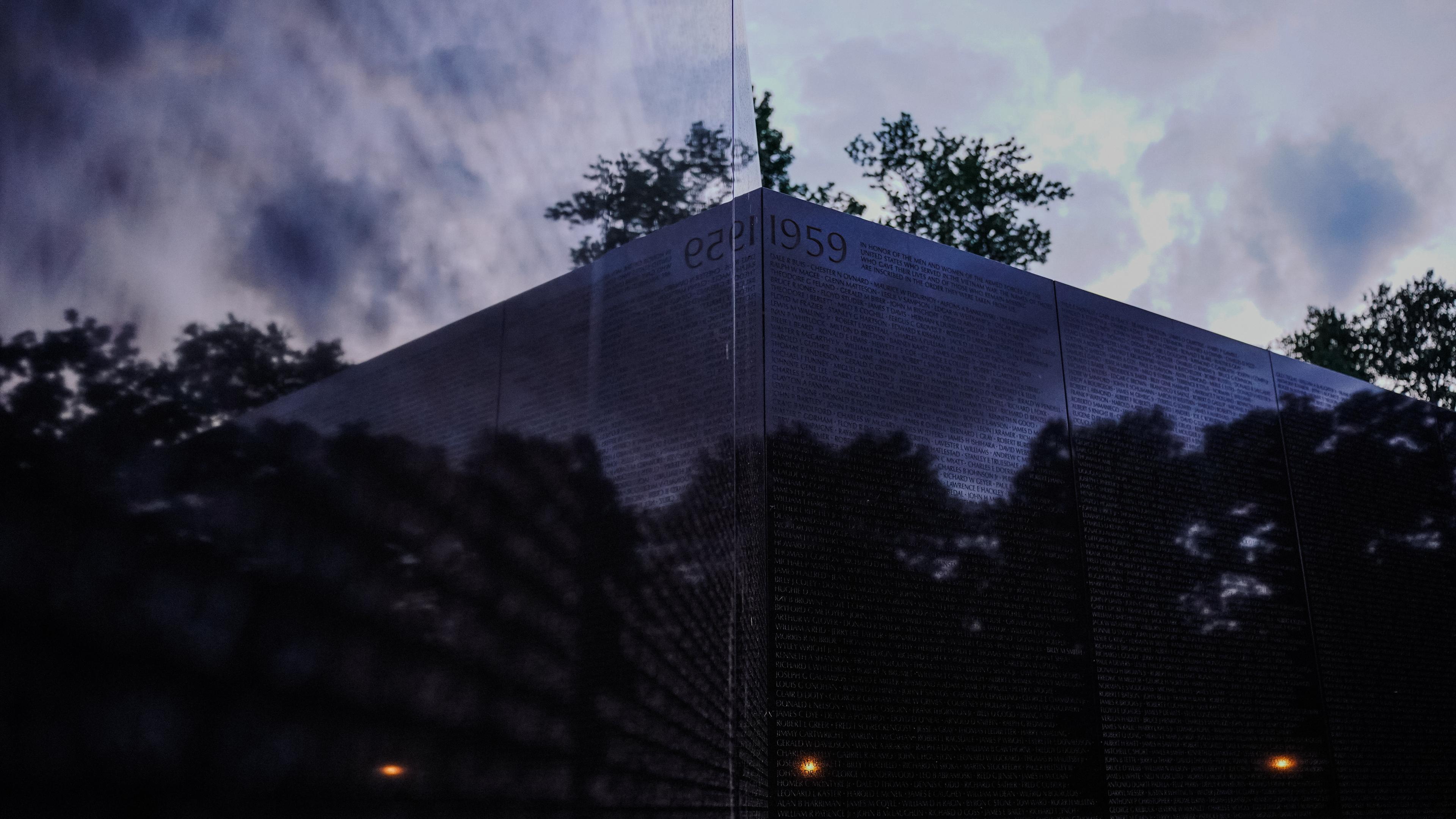
Vietnam Veterans Memorial
5 Henry Bacon Drive NW, Washington, D.C.
Amenities
- Wheelchair accessible
- Open 24 hours
- Food & drink — Near Vietnam Veterans Memorial
- Food & drink — Retail options nearby
- Restrooms — Available at the Lincoln Memorial and towards the middle of the northern side of the Reflecting Pool. Daytime hours vary
- Gift shop — Open Wed–Sun, 8:00AM–5:00PM
During the government shutdown, open-air Memorials will generally remain accessible to visitors. Restrooms, bookstores, gift shops, and information kiosk services may be suspended. For more information, please visit: doi.gov/shutdown.
The Vietnam Veterans Memorial, dedicated in 1982, honors the U.S. servicemen and servicewomen who died or went missing during the Vietnam War, Cambodian Civil War, and other conflicts that made up the Second Indochina War.
The Vietnam War was a decades-long conflict marked by immense sacrifice and ardent protest. It lasted from 1955 to 1975 between North Vietnam, supported by its communist allies, and South Vietnam, backed by the United States and other anti-communist nations. The war was marked by significant military campaigns, heavy casualties, and widespread protests.
The Memorial's design, a black granite wall inscribed with over fifty-eight thousand names, aims to provide a place for reflection and healing. The Memorial also includes statues like The Three Servicemen and the Vietnam Women’s Memorial, which were added in 1984 and 1993, respectively.

Take a virtual stroll through this National Mall site
History
Timeline of events
The Vietnam War starts when North Vietnam, led by Hồ Chí Minh, and supported by communist allies, clashes with South Vietnam, backed by the United States and other anti-communist nations.
50,000 people demonstrate against the war in Washington, D.C.
The Tết Offensive, a large-scale attack launched by North Vietnam, marks a major turning point in the war.
1968 becomes the deadliest year for American soldiers in Vietnam, causing hundreds of thousands of people to protest American intervention in Vietnam during the Democratic National Convention in Chicago.
250,000 people demonstrate against the war in Washington, D.C.
Vietnam veterans camp on the National Mall near the Capitol to protest the Vietnam War during the Dewey Canyon III event.
The Paris Peace Accords are signed, leading to U.S. withdrawal from Vietnam.
The Fall of Saigon occurs, marking the end of the war.
The Vietnam Veterans Memorial Fund (VVMF) is established and led by Jan Scruggs.
Public Law 96-297 authorizes construction of the Vietnam Veterans Memorial on a quadrant of the Constitution Gardens.
The VVMF announces a national design competition.
The VVMF design jury selects the winning design by Maya Lin.
Organizers hold a formal groundbreaking ceremony.
The Vietnam Veterans Memorial is dedicated during a Veterans Day tribute.
Frederick Hart's Three Servicemen statue is dedicated on Veterans Day.
Glenna Goodacre's Vietnam Women's Memorial is dedicated on Veterans Day.
President Clinton signs Public Law 106-214, authorizing a commemorative plaque honoring veterans who died after their service in the Vietnam war as a direct result of said service to be added to the Vietnam Veterans Memorial.
Key Features
The Vietnam Veterans Memorial serves as a symbol of the brave souls who fought in the war and its design pays homage to these individuals. The memorial’s impressive features include:
Cultural Impact
Funded entirely by private donations, the site reflects the public’s support and desire to honor those who served. As such, it has become a place of reflection and reconciliation for veterans and their families.
The Vietnam War itself is widely regarded as the “first televised war,” which intensified public engagement because war images were now readily available to the average American household.
The Memorial is also unique in that the design was chosen through a national competition!
Reflection Questions
High school learners: Our nation’s past is complex and often provokes reflection, especially as we look to the future.
Here are a few questions to inspire deeper thinking
- How did the Vietnam War impact American society and politics?
- Why is it important to have memorials like the Vietnam Veterans Memorial?
- How do public memorials contribute to national healing and reconciliation?
Educational Activities
Other Resources
Interested in learning more? The following links will provide you with additional context and information:
